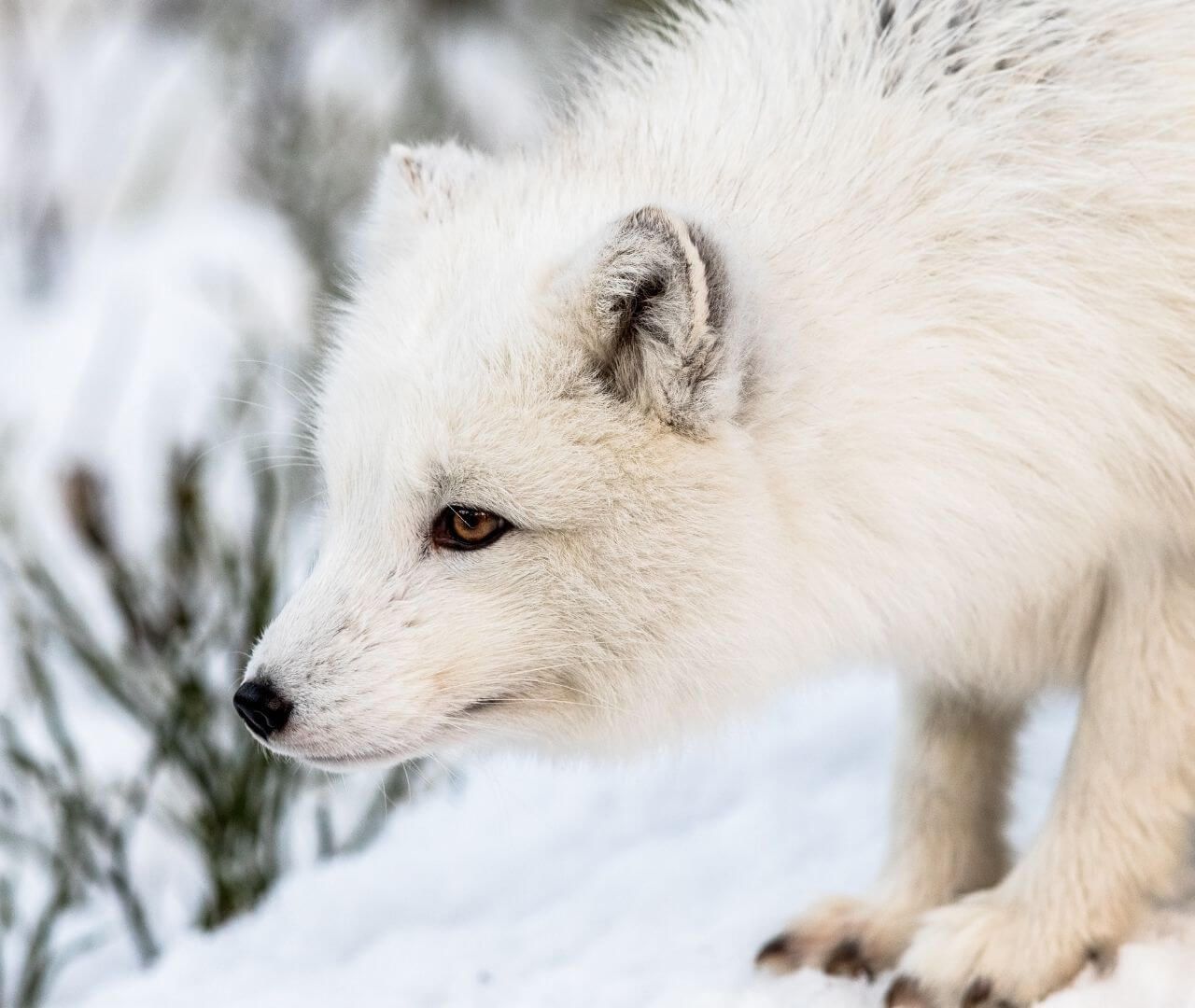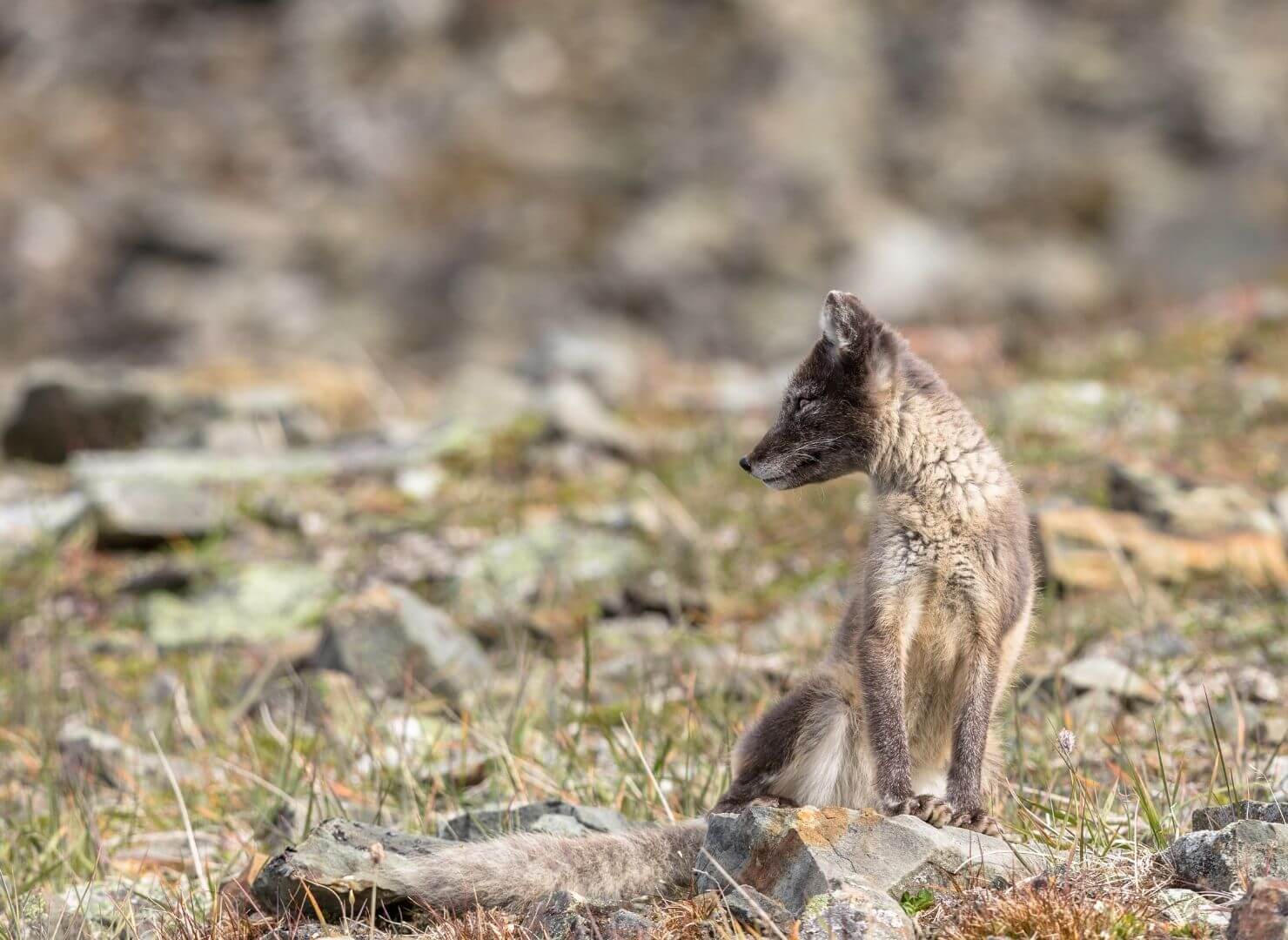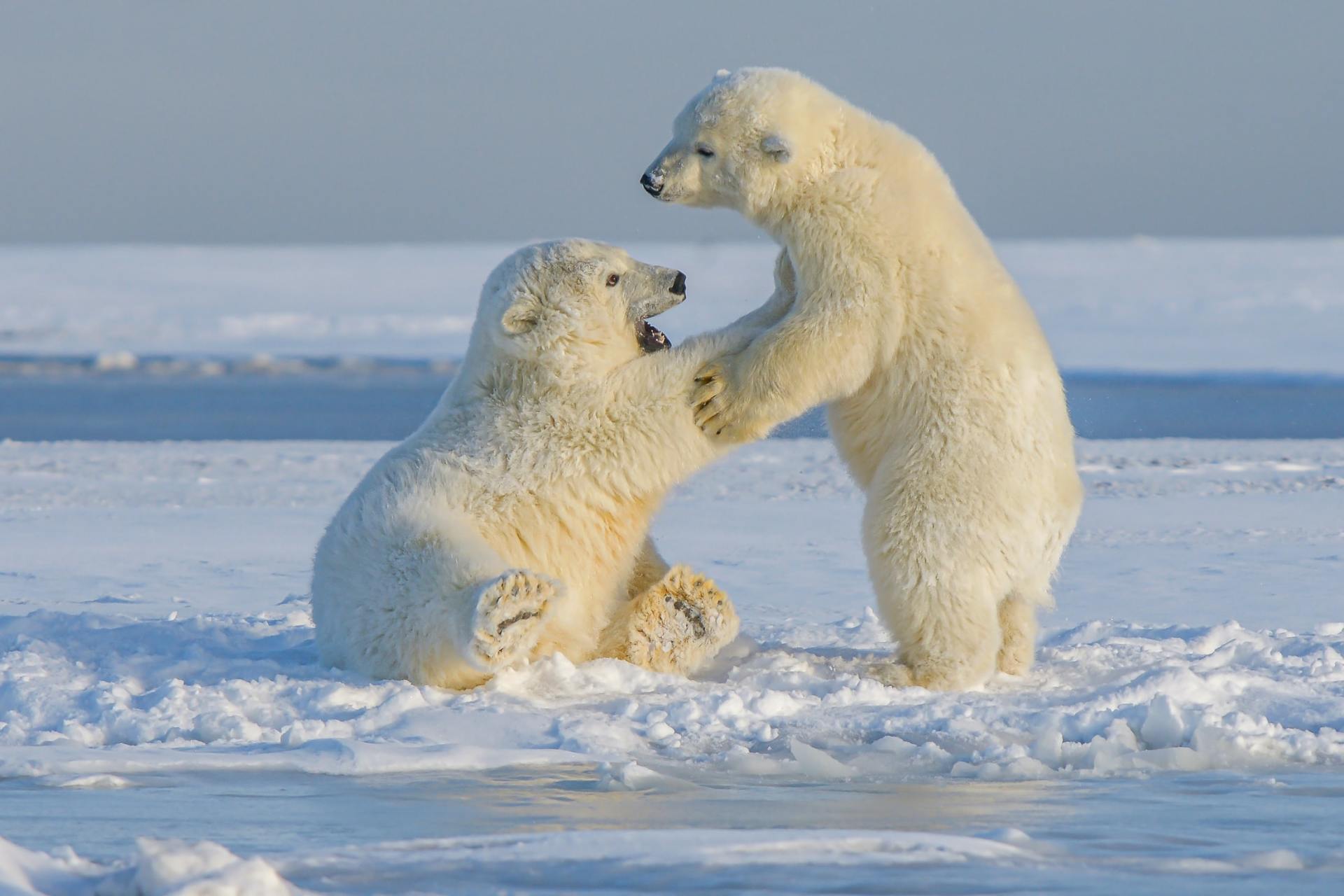Surviving the Climate
Adaptations

How Do Animals Survive in Extreme Climates?
Word of the Week
Brumation
Brumation is like hibernation for cold-blooded animals! During the winter months, animals like snakes and lizards enter a long state of inactivity.
Most reptiles brumate underground in a burrow where they are safe from predators and cold temperatures.
Species Spotlight
Arctic Fox
Vulpes lagopus
The arctic fox is perhaps the cutest canine in the Arctic! With its small ears, short legs, and fluffy fur, it is perfectly designed for life in a freezing climate. Because heat can easily escape an animal's body from their legs and ears, arctic foxes have small ears and short legs to reduce heat loss. Perhaps the most amazing thing about an arctic fox is that they change color to match the landscape during different seasons. In the summer, they are brown to match the dry landscape and in the winter, their fur thickens and turns white to match the snow!
Arctic foxes are opportunistic feeders, meaning they will eat anything they can get their paws on, even if it is already dead. Arctic foxes have a handful of predators themselves, like polar bears, wolves, golden eagles, grizzly bears, and humans. Their expert camouflage helps them both sneak up on their prey and avoid predators! Arctic foxes are wanderers and like to live on their own, except during mating season when males and females chase each other and play-fight. Arctic foxes are monogamous and usually have the same mate for their whole lives.
BRAIN BLAST
Identify one other animal that changes color! Why do they change color? Does the color change with the season?
Conservation Corner
Rising Sea Levels
Research has shown the global climate is changing. Depending on the region, there could be extended droughts, intense storms, or scorching temperatures. There may also be flooding along ocean coastlines.
The polar regions are warming twice as fast as the rest of the world, causing the massive glaciers to melt rapidly. As glaciers melt, many species, such as penguins, polar bears, and seals, lose the area they need to hunt, breed, and survive. Along with the loss of important habitat, the melting sea ice is causing the sea level to rise, putting coastal communities at risk of flooding.
The sea level is rising as a result of the atmosphere warming, a product of greenhouse gas emissions. We can help prevent the sea ice from melting by reducing our emissions (by reducing our demand!) and using renewable energy, like solar power and wind energy. Check out our unit on greenhouse gases to keep exploring.
Climate Challenge
We can all have a positive impact on the planet if we become aware of our actions! There are things we do every day that use energy and create emissions, even when we don't mean to.
For this challenge, you are going to record everything that you do that uses energy for one week. At the end of the week, look back at your recordings and identify how you can reduce your energy use. Then, implement them!
Examples of things to record:
- Turning on lights
- Watching TV
- Driving in the car or bus
- Playing video games
- Using the microwave
- Using hot water
- Running the air conditioner or heater
Glossary
Adaptation
Something an organism has or does that helps them survive in their environment.
Aestivation
A prolonged state of inactivity in both ectotherms and endotherms that occurs during the summer.
Behavioral Adaptation
Things organisms do or ways they act that help them survive.
Brumate
A state of inactivity in ectotherms (cold-blooded animals) during the winter months.
Camouflage
The ability for an organism to blend into their surroundings usually to hide from prey or predators.
Climate
Weather conditions in a region over a long period of time.
Diurnal
Being active mostly during the day.
Ectotherm
An animal that relies on the external temperature to regulate their body temperature (reptiles and amphibians). Also known as cold-blooded.
Endotherm
An animal that regulates their body temperature internally (mammals and birds). Also known as warm-blooded.
Greenhouse Gases
Gases in the atmosphere that trap heat from the sun close to the Earth.
Hibernation
An extended state of decreased activity and metabolic rate in endothermic (warm-blooded) animals during winter seasons.
Migration
The process of an animal moving to a new location during a specific time of the year.
Nocturnal
Being active mostly at night time.
Omnivore
An animal that eats both plants and animals.
Physical Adaptations
Body parts or other physical parts of a plant or animal that help them survive
Precipitation
Water that falls to the Earth's surface in liquid form.
Predator
An animal that hunts other animals for food.
Prey
An animal that is hunted and eaten by another animal.
Shelter
A protected space where animals will go when there is danger or to raising offspring.
Transpiration
The process of water leaving a plant as vapor through tiny holes on the leaves and stems.





